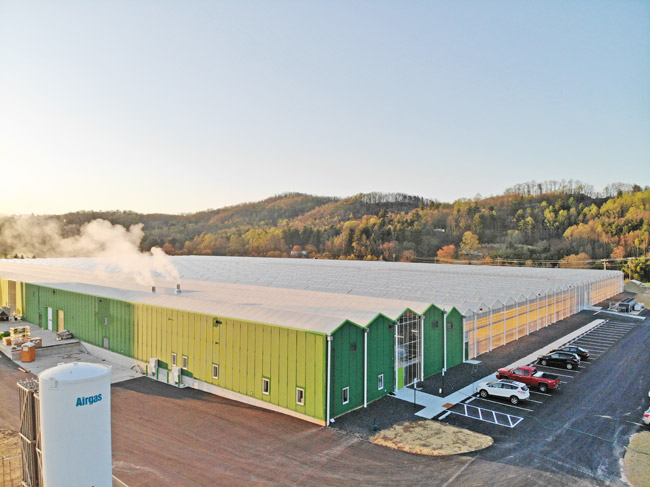For BrightFarms, indoor farming model brings big growth
Unlike most large lettuce and greens providers, BrightFarms is not a West Coast company. Instead, it”™s headquartered in the village of Irvington. Its greenhouses are more remote, on the East Coast and in the Midwest, and provide fresh produce to nearby major metro areas, cities and towns.

The company”™s founder, Paul Lightfoot, is a former tech and software CEO for BSG, a company that operated software businesses to improve distribution and productivity in retail. About a decade ago, he decided to bring his supply-chain management expertise to the mission of providing healthy, local, sustainably grown food to stores at an accessible price point.
“Through my career in supply-chain management, I had been programmed to live, breathe and eat efficiency,” Lightfoot said. “As I approached my 40th birthday, I had an epiphany that I needed to follow my passion, making sure people have access to delicious and nutritious food ”¦ I dug into the produce supply chain and found a system that seemed like it was at odds with itself and not as efficient as it could be. I was compelled to build a better supply chain that helps deliver fresher, tastier and more nutritious leafy greens at an accessible price point.”
The company is unique among producers for its indoor hydroponic farming model, which is highly sustainable and cost efficient, allowing the company to offer its greens at an affordable price point.
“We implement environmentally friendly practices, first, by relying almost entirely on natural sunlight for energy,” Lightfoot said. “This keeps energy bills and carbon emissions low. In fact, our costs are much lower than vertical farming methods for that very reason. Our greenhouse model also uses 85% less light, 90% less land and 95% less water than conventional farming methods.”
If you”™ve ever tried BrightFarms products around the Westchester and Fairfield region, available at its regional partner Stop & Shop supermarkets, they likely came from the company”™s greenhouse in Selinsgrove, Pennsylvania, its 280,000-square foot facility that”™s about a three-hour drive from the New York metro area.
Another benefit of indoor growth is a high level of control over pests and disease that could affect the crops. This means that no pesticides are necessary and none are used; nor are any insecticides, herbicides or fungicides, which is a step further than USDA organic standards.

With no pesticides used and a hydroponic model, which means the plants are grown from water and sunlight ”” no soil ”” there is no need to wash the produce after picking or at home, eliminating another usual step before packaging. And even though it is just water used to grow the greens, the process actually uses much less water than typical farming practices, about seven times less, and produces no runoff.
The proximity of greenhouses to their targeted markets makes it possible for the greens to be delivered and become available to consumers less than a day after being harvested. Compare that to greens shipped in from the West Coast, which can take up to a week to make it to shelves across the country. Over 98% of leaf lettuces in the country are grown in just two states, California and Arizona.
Aside from the need for freshness, this short transport time saves on both costs and total energy used.
Usually, to find locally grown produce, consumers have to go to farmers markets or order directly, but BrightFarms partners with grocery stores, making products accessible to consumers who primarily buy produce at the grocery store. Likely, this model is also part of what will position the company to become a national brand.
The setup is also easily replicable; according to Lightfoot, it can be created anywhere in the country, which allows BrightFarms to expand into, essentially, any market it chooses.

The most recent expansion was sizable, bringing BrightFarms into the southeast with a greenhouse in Hendersonville, North Carolina. The new facility is as large as its greenhouse in Pennsylvania, which was its biggest one so far. BrightFarms estimates that it will produce up to 2 million pounds of produce per year for its markets in the Carolinas.
The new greenhouse will up their customer base significantly, but the company intends to keep growing in new markets nationwide. Its last round of funding in the fall of 2020 brought in over $100 million with which to work.
“Our smart greenhouse model can be replicated anywhere across the country, and we have big plans to expand into every region in the next few years,” Lightfoot said.
“Next up, we”™ll be expanding in New England, and move onto Texas later this year. By the end of 2021, we will double in size and production and surpass availability in over 3,500 stores ”” the most of any indoor farming player.”